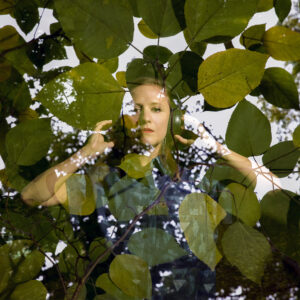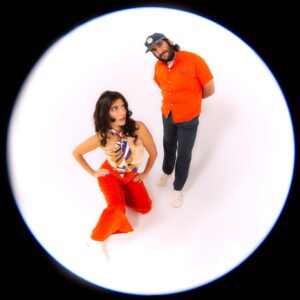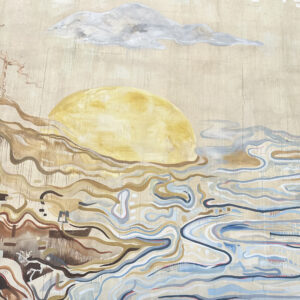SWEATY SURFER
04.26.11

dublab travels the globe with a mission of sharing as we discover. “Field Reports” are an opportunity for eager ears to join us on a voyage through amazing lands. We reflect glimmers of exotic essences through sounds, words and images, creating an expansive trailblazing experience. Please join us for this journey to Japan…
FROSTY’S SWEATY SURFER : JAPANESE ELEKI BOOM, GROUP SOUNDS & PINK FILM MUSIC
「汗だくのサーファー:ジャパニーズ・グループ・サウンズとピンク映画音楽」
Tracklist:
1 = Takeshi Terauchi & Blue Jeans / Karajishi Botan / Ereki Ippon Enka De Shobu!
寺内タケシとブルー・ジーンズ / 唐獅子牡丹 / エレキ一本演歌で勝負!
2 = Reiko Ike / Futen Gurashi Part. 1 / Onna Bancho Blues Mesubachi No Chosen
池玲子 / ふうてんぐらし Part.1 / 女番長ブルース 牝蜂の挑戦
3 = Jackey Yoshikawa and his Blue Comets / Blue Fountain / Original Hits Vol. II
ジャッキー吉川とブルー・コメッツ / マリアの和泉 / オリジナル・ヒット第2集
4 – Kazuko Sawamura and Peter Pan / My Boy / Noraneko Rock Nikkatsu New Action No Sekai
沢村和子とピーターパン / マイ・ボーイ / 野良猫ロック 日活ニューアクションの世界
5 = Takeshi Terauchi and the Bunnys / Symphony No. 5 / Let’s Go Classics
寺内タケシとバニーズ / 運命 / レッツ・ゴー “運命”
6 = Jacks / Omae Ni Muchuu Sa / Haragashi Onna
ジャックス / お前に夢中さ / 腹貸し女
7 = Takeshi Terauchi & Blue Jeans / Tsugaru Jongara Bushi / Let’s Go Eleki Bushi!
寺内タケシとブルー・ジーンズ / 津軽じょんがら節 / レッツ・ゴー・エレキ 節! – エレキの民謡お国めぐり –
8 = Jackey Yoshikawa and his Blue Comets / Linda / Original Hits Vol. II
ジャッキー吉川とブルー・コメッツ / 太陽の娘 / オリジナル・ヒット第2集
9 – Hajime Kaburagi / Sex Hunter (BGM) / Noraneko Rock Nikkatsu New Action No Sekai
鏑木創 / セックスハンタ (Bgm) / 野良猫ロック 日活ニューアクションの世界
10 = Hajime Kaburagi / Onna Bancho Blues Mesubachi No Chosen M-8 / Onna Bancho Blues Mesubachi No Chosen
鏑木創 / 女番長ブルース 牝蜂の挑戦 M-8 / 女番長ブルース 牝蜂の挑戦
11 = The Mops / Goiken Muyo / Noraneko Rock Nikkatsu New Action No Sekai
ザ・モップス / 御意見無用 / 野良猫ロック 日活ニューアクションの世界
12 = Hajime Kaburagi / Yasagure Anegoden Sokatsu Lynch M-6B / Onna Bancho Blues Mesubachi No Chosen
鏑木創 / やさぐれ姐御伝 総括リンチ M-6B / 女番長ブルース 牝蜂の挑戦
13 = Kyu Sakamoto / Kanashiki Rokujyussai / Seishunka Nenkan Best 30 (‘60)
坂本九 / 悲しき60才 / 青春歌年鑑 BEST30 (‘60)
14 = Salty Sugar / Hashire Kotaro / Seishunka Nenkan Haiban Best 200
ソルティー・シュガー / 走れコータロー / 青春歌年鑑 廃盤 Best 200
15 = Hiroki Tamaki / Boso Shudan ‘71 Bgm / Noraneko Rock Nikkatsu New Action No Sekai
玉木宏樹 / 暴走集団 ‘71 Bgm / 野良猫ロック 日活ニューアクションの世界
16 = Takeshi Terauchi & Blue Jeans / Moso Bangaichi / Ereki Ippon Enka De Shobu!
寺内タケシとブルー・ジーンズ / 網走番外地 / エレキ一本演歌で勝負!
17 = Jacks / M-10 / Haragashi Onna
ジャックス / M-10 / 腹貸し女
18 = Takeshi Terauchi and the Bunnys / Kisobushi / Let’s Go Eleki Bushi!
寺内タケシとブルー・ジーンズ / 木曽節 / レッツ・ゴー・エレキ 節! – エレキの民謡お国めぐり –
19 = Sharp Five Go Go / Kaze Ga Naiteru / Japanese Pops Golden Hits
シャープ・ファイヴ・ゴーゴー / 風邪が泣いている / 和製ポップス・ゴールデン・ヒット
20 = Kenjiro Hirose / Onna Bancho Taiman Shobu M-3 / Onna Bancho Blues Mesubachi No Chosen
広瀬健次郎 / 女番長タイマン勝負 M-3 / 女番長ブルース 牝蜂の挑戦
21 = Hajime Kaburagi / Sex Hunter Ps-C / Noraneko Rock Nikkatsu New Action No Sekai
鏑木創 / セックスハンター Ps-C / 野良猫ロック 日活ニューアクションの世界
22 = Ken Yamauchi / Ken No Rock / Tokyo A GoGo
山内賢 / 健のロック / 東京ア・ゴーゴー
23 = The Darts / Kemeko No Uta / 7″
ザ・ダーツ / ケメコの歌 / 7″
24 = Folk Crusaders (Kazuhiko Kato – the Folk Parody Gang) – I Only Live Twice / 7″
ザ・フォーク・クルセダーズ / 帰ってきたヨッパライ / 7″
25 = Food Brain / M-7 / Shinjuku Mad OST
フード・ブレイン / M-7 / 新宿マッド
26 = Takeshi Terauchi & “Blue Jeans” / Edo Komoriuta / Let’s Go Eleki Bushi!
寺内タケシとブルー・ジーンズ / 江戸子守唄 / レッツ・ゴー・エレキ 節! – エレキの民謡お国めぐり –
I once suspected Japan might be a well developed mirage. For how could so many far out elements arise from a real place? Let’s explore some Japanese standards: the delicate elegance of its painted scrolls, all feathery swoops and textured blossoms, the exquisitely balanced, deceptively simple dishes that dance on your tongue in a thousand bursts of epicurean epiphany, the out of context oddity of a hundred lacy, Gothic Lolitas giggling next to a gang of pompadour crested rock-a-billy dudes twisting like their hair grease depended on it. How could this really really really be real?
I imagined all of these cultural artifacts to be the work of a scheming team of geniuses bent on an international inside joke. I proposed that when people hopped a plane to “Tokyo” they were actually taken to Iceland, given a gift certificate and told to keep the secret. Well friends, I was pleasantly surprised when I made my first journey to Japan nearly a decade ago and confirmed its rock solid existence. It’s real but surely not simple. After World War II Japan left the rest of us behind and launched their nation into an outer space orbit right here on Earth.
I’ve been fortunate enough to return to Japan many times and on each visit I strive to discover uniquely Japanese modern music. This can prove a frustrating mission. When record shopping, the typical response to my inquiries about awesome Japanese bands are baffled glances or deflections to walls filled with foreign discs. My frustration mounts from these moments because I know the amazing, creative power of Japanese artists. Japan is a land of organized energy. It is full of explosive moments so carefully bundled they must be held by invincible seams. There is a burning desire to absorb and reflect. Japanese bands are masters of precision but their output often comes in the form of inspired imitation. Reckless souls set the world ablaze and the calm ones contain it. On my fourth and most recent voyage to Japan I stepped back a few decades to better understand the emergence of the Japanese rock sound and why its best moments are those that sound the strangest.
In 1962 the Ventures toured Japan and lit the fuse for a surf music boom that soon spawned a wave of lightning fast guitars and tumbling blasts on tight drums. These new surf bands formed the Eleki sound that was topped by cats such as guitarist Takeshi “Terry” Terauchi & drummer Jackey Yoshikawa. Their sounds were blistering, heavy and filled with supersonic string strums. A Japanese surf music scene makes perfect sense when you consider the island locale but the surf essence here was pure style not practice. I’m sure some of the musicians might have hopped weekend trains to catch waves on the coast in Chiba but most were focused solely on ripping through jams while remaining bone dry in pencil thin pants. Some of the most sparkling moments of this genre come when the composers shoot the fusion tube and incorporate traditional Japanese folk melodies and instruments like the Koto Harp or Shakuhachi Flute with their guitar amp overdrive.
The Eleki scene choked on sea foam in 1966 when the Beatles, fresh from their invasion of America, came to blow Japanese minds. Their famous Budokan Concert caused a societal stir from the bottom up. The instrumental focus of Eleki couldn’t cut it anymore. Bands knew they needed to sing out to be seen in the scene. The only question was in which tongue? Would it be cool enough to wail in Japanese or was English the key to the kids hearts and wallets? Opinions differed and bands sometimes alternated languages on the same album or song. The name rock and roll itself with all it’s r’s and l’s proved difficult to float off Japanese tongues so the genre Group Sounds or G.S. was coined for the Japanese movement. The name was their own but the image and sound was based tightly on the British and American mold. The most popular G.S. bands were hugely popular at home. Many even hit the silver screen and made their own rock films in the mold of “A Hard Days Night.” As high as they rose their fame never stretched beyond the Sea of Japan.
While the Beatles spawned the relatively innocent vibes of the Group Sounds scene the later echoes of Hendrix, the Velvet Underground and Blue Cheer twisted things into darker directions. These psychedelic torch bearers helped launch the Japanese New Rock movement which stepped forward over melted barriers. The Japanese musicians like their Western counterparts were focused on fuzzing up heads with experimentation. The blinds were tossed wide open and all elements became fair game. New Rock merged explosive guitar distortion with sampled radio voices, eastern melodies, odd time signatures and moody jazz chords without a second thought. This often heavy, lusty sound perfectly slid into the Pink Films that were swelling in tandem. These sexploitation flicks were cranked out on the gritty, grainy cheap but were often able to achieve high impact through psych stylings. Though many of the films were made merely to satiate sexual desires the bands whose sounds accompanied them often soared to loftier signals. Many remain active in the Japanese sound landscape and helped influence the vibrant, home-brewed noise scene that was to follow decades later.
Each of the musical movements I dove into on my recent Japanese journey: Eleki, Group Sounds and New Rock were directly influenced by foreign forms. Some may write off these Japanese rock sounds as excellent copy cats but they all incorporate sparks of unique fusion. An air of imitation exists but there are magic moments which rise above and burst with energy. Maybe these enhanced, expert imitations are what make this music so special. A candle burning in a chamber of mirrors is beautiful so who cares which flames are real? The infinite refections form a beautiful, new vision.
I’m always overjoyed to reconfirm Japan’s existence and dig deeper into its layered culture. Iceland is wonderful but I’d rather wander the streets of Tokyo any day.
– frosty
Thanks to Katsuo Design for the incredible, sexy cover art!!! Playlist translation by Hashim B.
For more international explorations please visit the dublab “Field Reports” page.









